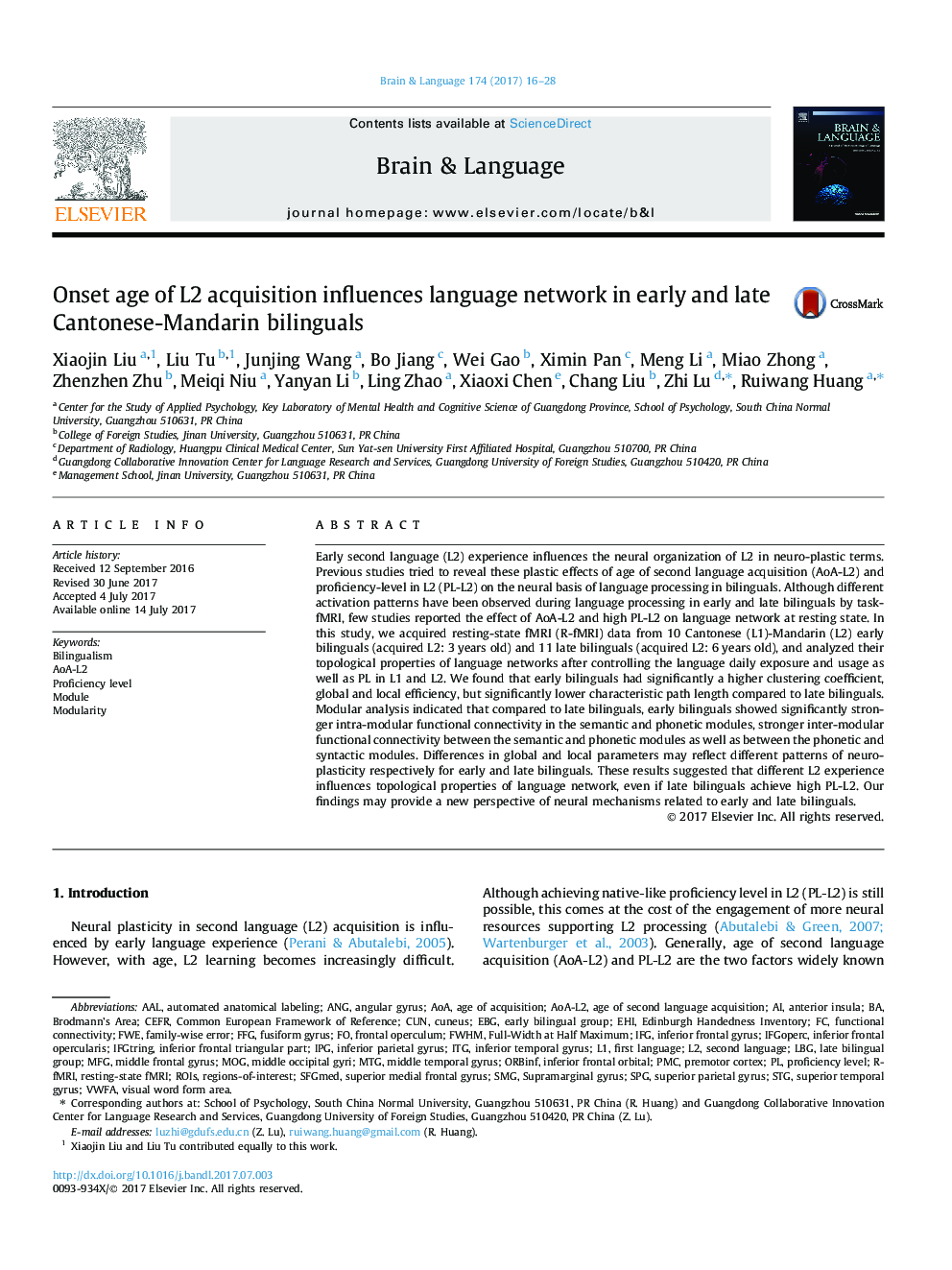| Article ID | Journal | Published Year | Pages | File Type |
|---|---|---|---|---|
| 5041233 | Brain and Language | 2017 | 13 Pages |
â¢EBG had higher Cw,Eloc and Eglob, but lower Lw compared to LBG.â¢Stronger intra-modular FC was found in the semantic and phonetic modules in EBG than LBG.â¢EBG displayed stronger inter-modular FC in phonetic-semantic and in phonetic -syntactic modules compared to LBG.â¢L2 experience affected topological properties of the language network in bilinguals.
Early second language (L2) experience influences the neural organization of L2 in neuro-plastic terms. Previous studies tried to reveal these plastic effects of age of second language acquisition (AoA-L2) and proficiency-level in L2 (PL-L2) on the neural basis of language processing in bilinguals. Although different activation patterns have been observed during language processing in early and late bilinguals by task-fMRI, few studies reported the effect of AoA-L2 and high PL-L2 on language network at resting state. In this study, we acquired resting-state fMRI (R-fMRI) data from 10 Cantonese (L1)-Mandarin (L2) early bilinguals (acquired L2: 3Â years old) and 11 late bilinguals (acquired L2: 6Â years old), and analyzed their topological properties of language networks after controlling the language daily exposure and usage as well as PL in L1 and L2. We found that early bilinguals had significantly a higher clustering coefficient, global and local efficiency, but significantly lower characteristic path length compared to late bilinguals. Modular analysis indicated that compared to late bilinguals, early bilinguals showed significantly stronger intra-modular functional connectivity in the semantic and phonetic modules, stronger inter-modular functional connectivity between the semantic and phonetic modules as well as between the phonetic and syntactic modules. Differences in global and local parameters may reflect different patterns of neuro-plasticity respectively for early and late bilinguals. These results suggested that different L2 experience influences topological properties of language network, even if late bilinguals achieve high PL-L2. Our findings may provide a new perspective of neural mechanisms related to early and late bilinguals.
